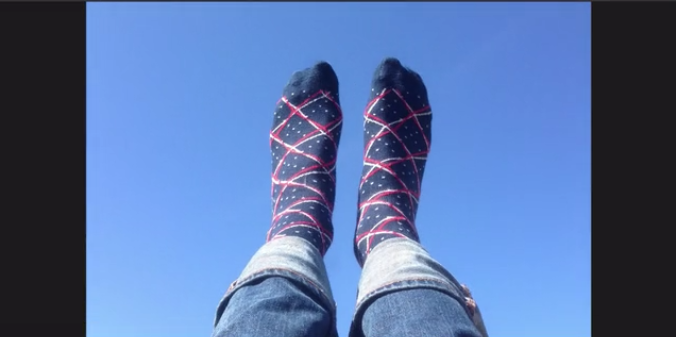
Working in graphic design, Lewis works does a lot of hands-on work. But he felt as though it was detracting from how he learned design on his own through the digital world.
“I wanted to see if I could mix this balance where I could still kind of do these practical elements but still have a digital sensibility within it … and {string&&loop} meets the requirements of both,” Lewis told Digital Trends.
So {string&&loop} socks are not the usual type of socks you will find in a department store: Lewis’ socks are designed by an algorithm that randomly generates patterns based on traditional argyle.
“The patterns are actually deconstructing all of the elements found in traditional argyle … and using digital to reinvent them,” Lewis said. “The algorithm I developed completely randomizes where the intersections of those line segments meet, as well as the density of the dots, as well as the size of those dots.”
That causes differently shaped diamonds to form, as well as various types of dots. The result is a pair of socks that’s pretty unique, and what Lewis bills as the world’s first algorithmically designed socks.
Lewis’ idea is a part of his Senior Design Thesis at Boston University, and he’s using Kickstarter to send out the first line of socks to backers. This line consists of a blue sock with red and white lines, and white dots. Lewis thinks a second unique line could come quickly, but it depends on how well the campaign goes.
As of publication, the {string&&loop} campaign has raised $1,388 of its humble $1,800 goal, and has 14 days to go.
More importantly, how soft are the socks? Thanks to consisting mostly of combed cotton, Lewis says “they’re super soft … like, they’re soft.”
Lewis’ project aimed at bringing digital designs to physical objects isn’t new — though it may be a first for socks. The early-bird special for $10 a pair has sold out, but you can still grab a pair for $12. There’s an additional $5 charge for shipping if you live outside the U.S., and Lewis says he expects the socks to ship out this summer.


